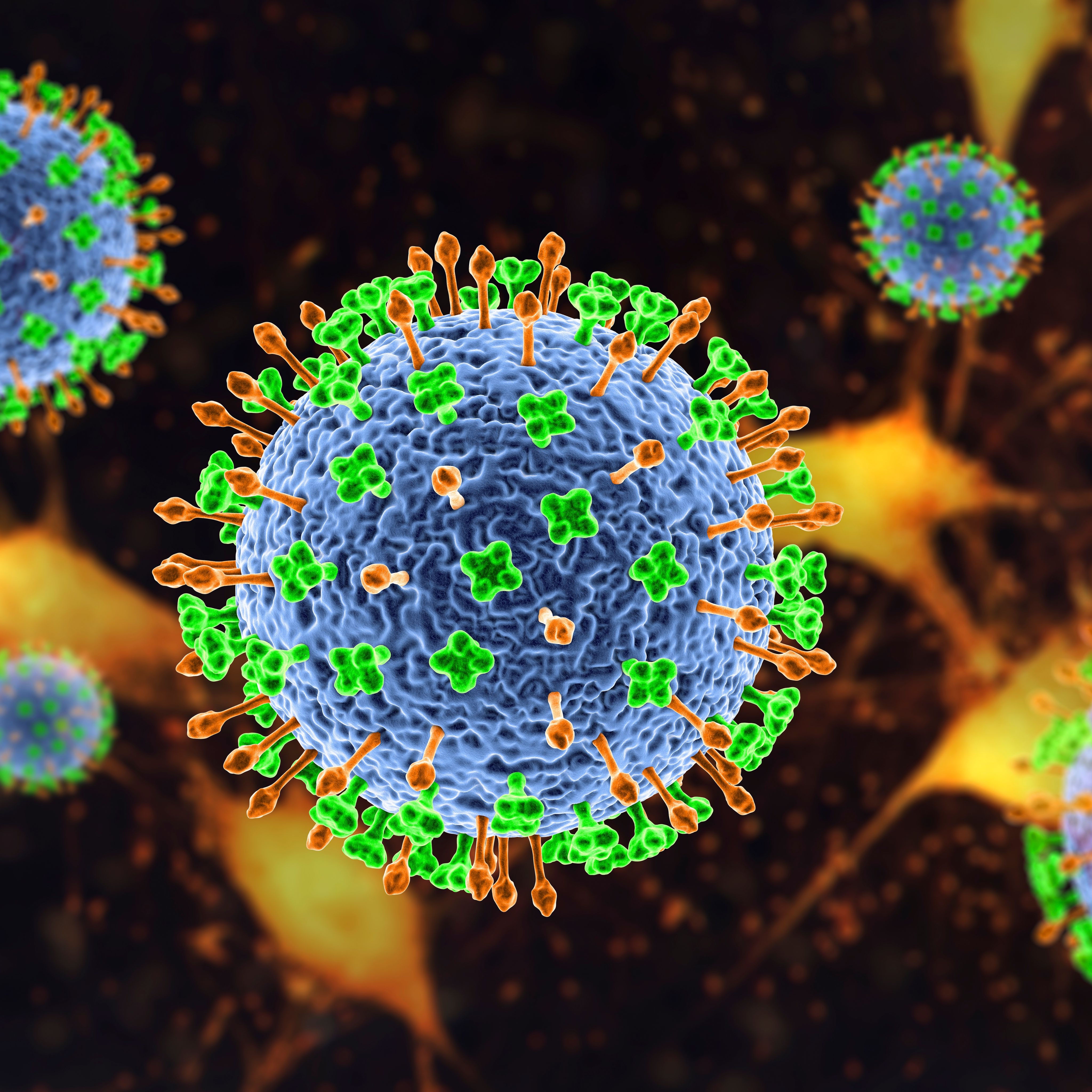
What is the Nipah virus?
The Nipah virus owes its name to its place of discovery, Nipah in Malaysia. This is where the pathogen was first described in 1999, following several cases of infection among pig farmers. The Nipa virus belongs to the family of Paramyxoviridae and causes encephalitits and very severe respiratory infections.
What are the characteristics of the Nipah virus?
The Nipah virus is a member of the Paramyxoviridae, and belongs to the genus of henipaviruses. The natural host of the virus are flying foxes, which infect humans via indirect contact with their excrement or with their saliva. Palm sap in particular is considered to be a frequently contaminated food. The fruit bats spread the virus via intermediate hosts, such as pigs, horses, dogs and cats.
Where is the Nipah virus predominantly found?
In the late 1990s, many cases of infectious encephalitis occurred in Singapore and Malaysia, where the Nipah virus was first identified as the cause. To date, a total of 12 minor outbreaks of the virus have been documented, including cases in India and Bangladesh.
How is the Nipah virus transmitted?
The Nipah virus is very easily transmitted through contact with infected pigs. Workers on farms and in slaughterhouses are particularly at risk . However, human-to-human transmission is also possible. About half of the cases in the 1990s were passed on within the family.
In India and Bangladesh, on the other hand, it was mainly the fruit-feeding bats that played an essential role. They are the so-called hosts of the Nipah virus, but do not contract the disease themselves. At that time, the virus was transmitted to humans through contamination with droppings and bitten fruits. The exact transmission routes have not yet been fully clarified . In humans, the incubation period is under 14 days.
What are the symptoms of the Nipah virus?
The following symptoms usually occur with the Nipah virus:
- high fever,
- Fatigue,
- Headache and pain in the limbs.
As the disease progresses, encephalitis appears with the following symptoms:
- Convulsions,
- Attacks of dizziness,
- Disturbances of consciousness,
- Disorientation.
The course of the disease can become so severe that a coma develops within two days. Every second person infected with the Nipah virus dies of the consequences. In some cases, however, the course of the disease is much milder. There are even reports of cases that have caused no symptoms at . These patients are initially symptom-free. These initially symptom-free patients often only suffer encephalitis months later.
How is Nipah virus diagnosed?
A doctor will first of all ask about recent travel activities, because there may already be an indication of the infection if a person affected has returned from a Nipah risk area in the last few days.
In order to detect the Nipah virus without a doubt , a blood sample must be taken. By detecting antibodies in serum, blood or cerebrospinal fluid, the virus can be detected and the diagnosis made with certainty.
The examination material is highly contagious. That is why these examinations are not offered in all laboratory diagnostic facilities . Usually, the test material is sent to special tropical institutes.
How is the Nipah virus treated?
So far there is no causal therapy for an infection with the Nipah virus. Basically, the symptoms are treated as follows:
- ibuprofen or paracetamol can be taken for fever and pain.
- Sufficient fluid intake to avoid dehydration.
- Rest and quiet.
Evidence has shown that the drug ribavirin has been so successful that the mortality rate has been significantly reduced.
Affected persons who contract a Nipah infection must be isolated to prevent the spread of infection. The following precautions must be taken in a hospital:
- Face shield,
- surgical face masks,
- Surgical gowns and surgical aprons,
- Double gloves.
What is the prognosis for Nipah virus?
The mortality rate varies between 40 and 70%, depending on whether severe or encephalitic symptoms are present. The lethality rate is also dependent on whether adequate medical care is available to . Rather unfavourable prognostic factors are diabetes, neurological symptoms and advanced age.
How can Nipah virus be prevented?
Prevention of animal-to-human transmission
It can be assumed that flying foxes visit date palms and lick their sap . Conversely, this means that date palm sap should not be consumed. Pets and domestic animals can also be the carrier of the Nipah virus, as flying foxes in many cases drop fruit that has not been completely eaten, which is then eaten by the other animals . This means that one should try to keep one's pets indoors . You should also not climb trees, as bats may have left their saliva and secretions on them.
Prevention of human-to-human transmission
Human-to-human transmission of Nipah virus is not widespread . However, it is quite possible to contract the virus if you come into contact with the secretions of an infected person. Traces of the Nipah virus have also been found in urine, at least in cases in Malayisia, so you should not share washrooms with infected people.
Is the Nipah virus notifiable?
According to the Infection Protection Act, even the suspicion of the disease, as well as the disease itself and death, must be reported. These reports are essential in order to be able to take early measures against the spread of the Nipah virus.
